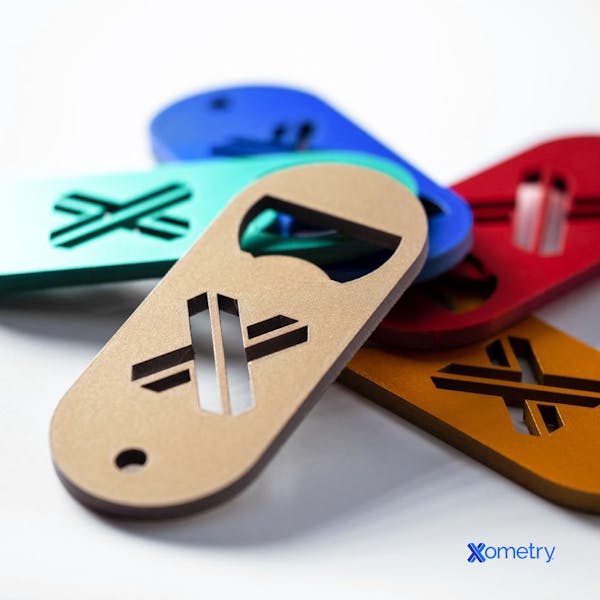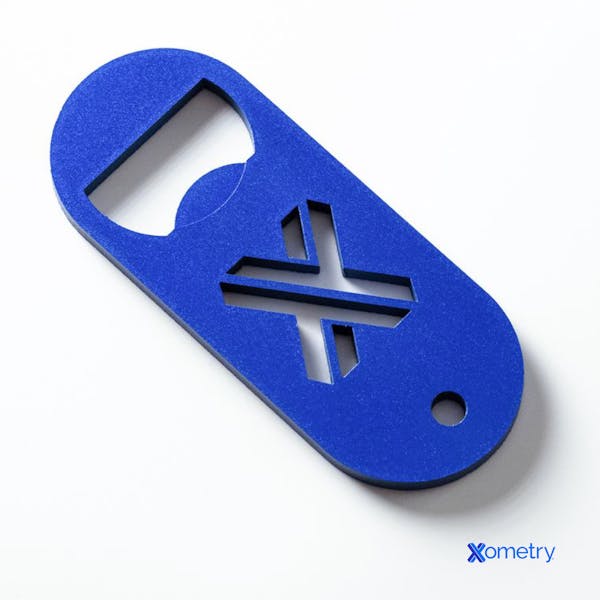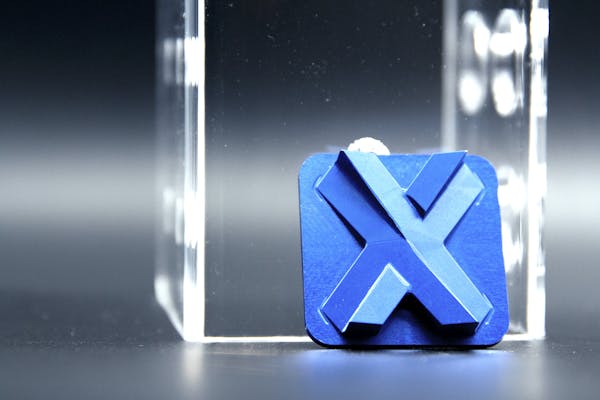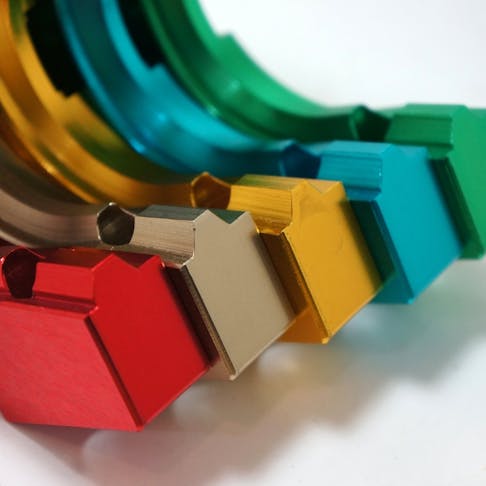You’ve no doubt seen many brightly colored metal items — whether it’s a water bottle, a harness clip, or your bicycle frame — that don’t seem to fade or rust over time. It’s highly likely that these are made from colored anodized aluminum, a process that not only gives the metal more aesthetic appeal, but also makes it stronger, more durable, and even more corrosion-resistant. It’s little wonder why so many of our customers choose it!
Let’s talk about how exactly colored anodized aluminum is given its pigment and what types of shades you can order.
What is Anodized Aluminum?
Anodized aluminum is basically aluminum that has gone through anodization: an electrochemical process that gives the metal’s surface a protective oxide layer. This makes it stronger and gives it more power against corrosion, abrasion, environmental factors, and fading. The fun thing with anodizing aluminum is that you can get it in practically any color you like, as you can see in the anodized aluminum Xometry parts below.

The color isn’t painted on in the traditional sense. It’s actually integrated into the metal’s protective oxide layer, something that gives it remarkable fade and scratch resistance. It can be dyed in many different shades, and you even have the option of adding gloss. Here’s another example of the shiny and bright surfaces that this method is capable of:

The world is your oyster when it comes to choosing a color for your anodized aluminum. Your pieces can be made in basic colors like black, blue, red, yellow, and white, and even more vibrant options like purple, orange, pink, and gold. Just make sure you clearly state the exact color you want when making an order.
Coloring Anodized Aluminum
There are several methods that we use to give anodized aluminum the colors that our customers ask for. The final color will also be dependent on things like film thickness, dye concentration, metal type, and temperature. Here’s a brief overview of these coloring processes:
Dye: This entails soaking the anodized aluminum in a dye solution. The color gets deep into the tiny pores of the oxide layer. The longer you leave it in the solution, the deeper the color.
Electrolyte: In this method, the metal is put into a bath with inorganic metal salts (without carbon-hydrogen bonds), and an electric current is passed through it. This deposits the salts into the oxide layer’s pores and creates different colors.
Integral: This is a two-in-one method that combines the anodizing and coloring processes to make a super strong and durable oxide layer in bronze and black tones. It’s performed during anodizing – not after, like the other methods.
Interference: By changing the pore structure in the protective layer with sulfuric acid, the illusion of color can be achieved via what are called “optical interference effects.”
Dip: Similar to the dye process, this involves dipping the metal into a dye tank to fill its pores, then boiling it in deionized water to stop the reaction. This can make loads of different colors, but it might not be as UV-resistant as the other types.
Once we’ve colored the material, it needs to be sealed to lock the color in. The sealing process is the last step and involves boiling the anodized (and colored) aluminum in hot water, trapping the dye’s molecules in the pores. This is also referred to as “hydration,” and it is an important step because it prevents the dye from escaping and won’t allow the material to react further with any external factors.

How Xometry Can Help
Xometry provides anodizing services, including Type II, Type III (hard coat), and Type III (w/ PTFE) for all your manufacturing needs, and turnaround can be in as little as two days. Get your instant quote for anodizing today, or check out our wide range of other manufacturing capabilities, including 3D printing, CNC machining, sheet metal fabrication, and metal stamping.
Disclaimer
The content appearing on this webpage is for informational purposes only. Xometry makes no representation or warranty of any kind, be it expressed or implied, as to the accuracy, completeness, or validity of the information. Any performance parameters, geometric tolerances, specific design features, quality and types of materials, or processes should not be inferred to represent what will be delivered by third-party suppliers or manufacturers through Xometry’s network. Buyers seeking quotes for parts are responsible for defining the specific requirements for those parts. Please refer to our terms and conditions for more information.


